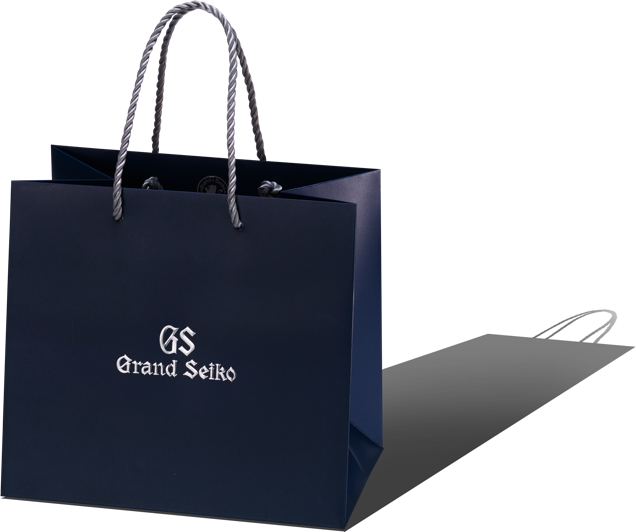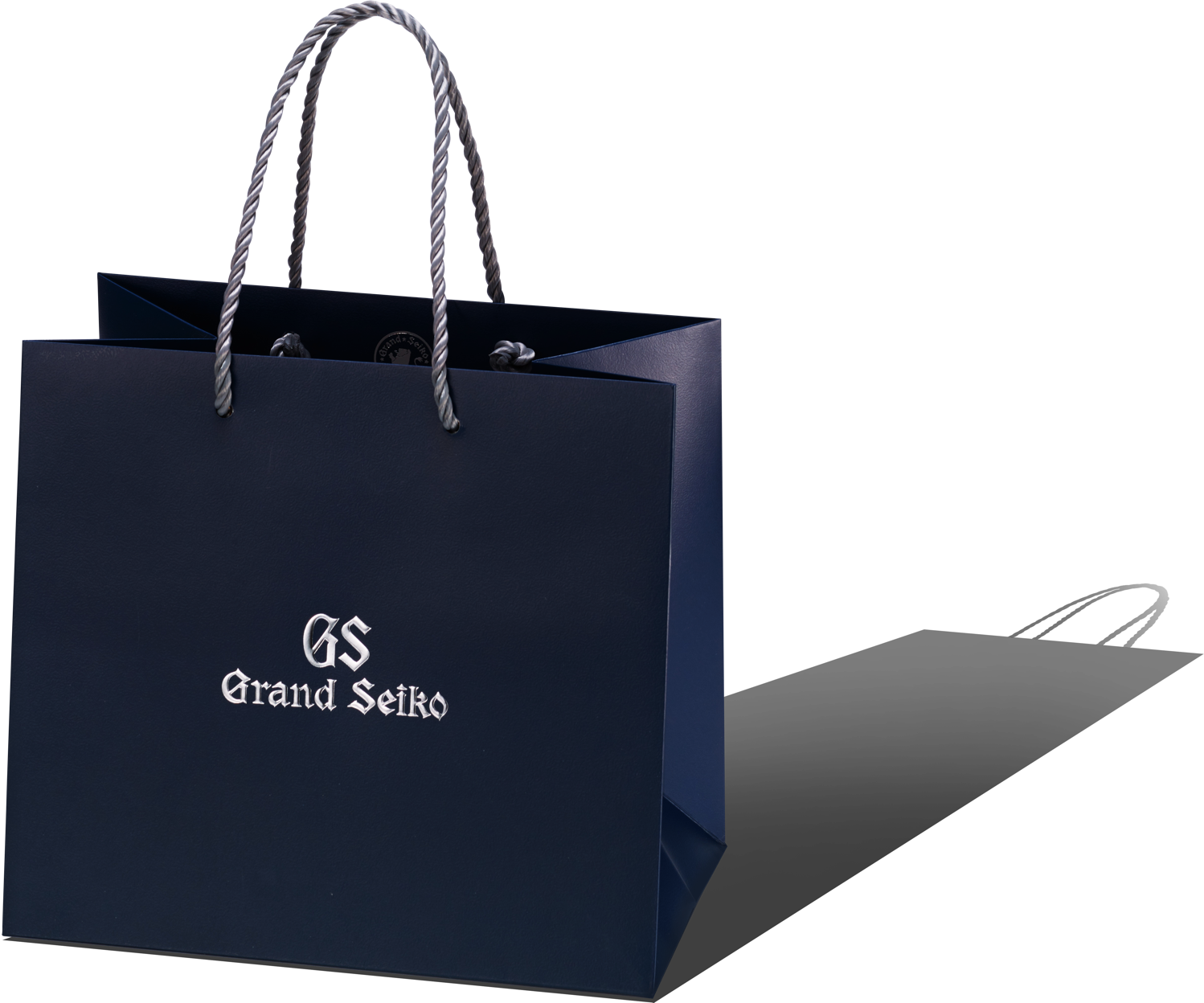Born in 1960, Grand Seiko is the realisation of Seiko founder Kintaro Hattori’s mission to create the “ideal watch” – a timepiece that perfectly embodies precision, legibility, durability, and beauty. Today, this ethos remains the driving force for Grand Seiko’s engineers and designers, who continue to innovate with an eye toward the future without ever forgetting the past.
The Grand Seiko virtual archive is an ever-evolving and ever-growing part of GS9 Club that is dedicated to preserving and sharing the history of Grand Seiko based and classified by calibre. We will continue to add historical and current models over time.
It was Seiko and the Hattori family’s quest for excellence in the pursuit of making the ideal watch that led to the birth of Grand Seiko. Kintaro Hattori founded K. Hattori & Co., which later became known as Seiko, in 1881. The name Seiko was derived from Seikosha, the first factory opened in 1892 by Hattori. Seikosha comes from the Japanese terms Sei 精 – meaning exquisite or delicate, Ko 工 – meaning manufacturing or engineering, and Sha 舎 – meaning house or shack. The term Seiko can also mean elaborate 精巧, and using different kanji characters it can mean success 成功.
In 1937, Daini (the Second) Seikosha was established in Kameido, Tokyo. It specialised in the production of wristwatches, while the original Seikosha factory specialised in clocks and pocket watches. In 1944, Daini Seikosha opened their “Suwa plant” in central Japan as an extension of Daini Seikosha to evacuate from Tokyo during World War II.
Daiwa Kogyo, a parts manufacturer in central Japan that had a subcontracting business with Daini Seikosha, merged with the Daini Seikosha Suwa plant in 1959 to form Suwa Seikosha, an entity now separate from Daini Seikosha. A friendly competition began between Daini and Suwa Seikosha, and it helped drive innovation, with one manufacturer striving to exceed the quality produced by the other.
Daini Seikosha is now called Morioka Seiko Instruments and it is located in the northern Iwate prefecture of Japan. In July of 2020, they opened Grand Seiko Studio Shizukuishi, the new birthplace of all modern Grand Seiko 9S Mechanical timepieces.
Suwa Seikosha is now called Seiko Epson and remains in the Nagano prefecture of central Japan. There resides the Shinshu Watch Studio, home of 9R Spring Drive and 9F Quartz.
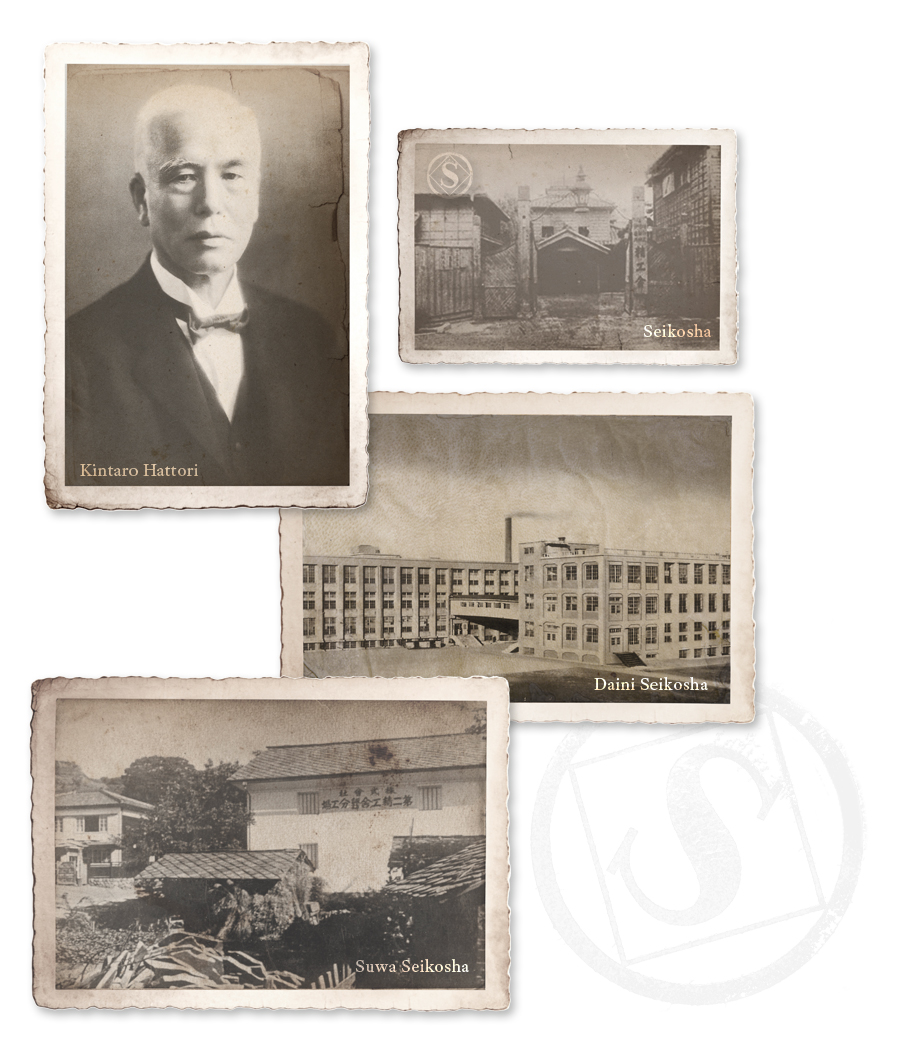

In 1956, the team at Suwa Seikosha unveiled the Marvel, a watch inspired by what they saw as the fundamentals of watchmaking: accuracy, durability, and aesthetic beauty. The Marvel was a major technical feat for Seiko – it was the company’s first watch designed and produced entirely in-house, utilising Seiko’s proprietary mainspring and balance spring. In response to the Marvel, Daini Seikosha released the Cronos, a competing model with a thinner case and higher performance specs. Two years later in 1958, Suwa followed up with Lord Marvel, a watch featuring a highly legible design thanks to its large markers and hands. It also saw significant improvement to its shock resistance. In 1959, Suwa launched The Crown, an elegant dress watch that was based on the Marvel but with profound technical advances. Equipped with Calibre 560, the Crown had a larger balance wheel for improved isochronism, an increased barrel size along with more torque, and an improved Diashock system for greater shock resistance.
The Marvel, Lord Marvel, and Crown were certainly significant watches in their own right, but, more importantly, they set the groundwork for what would come in 1960, when the company would unveil an aesthetic and technical powerhouse.
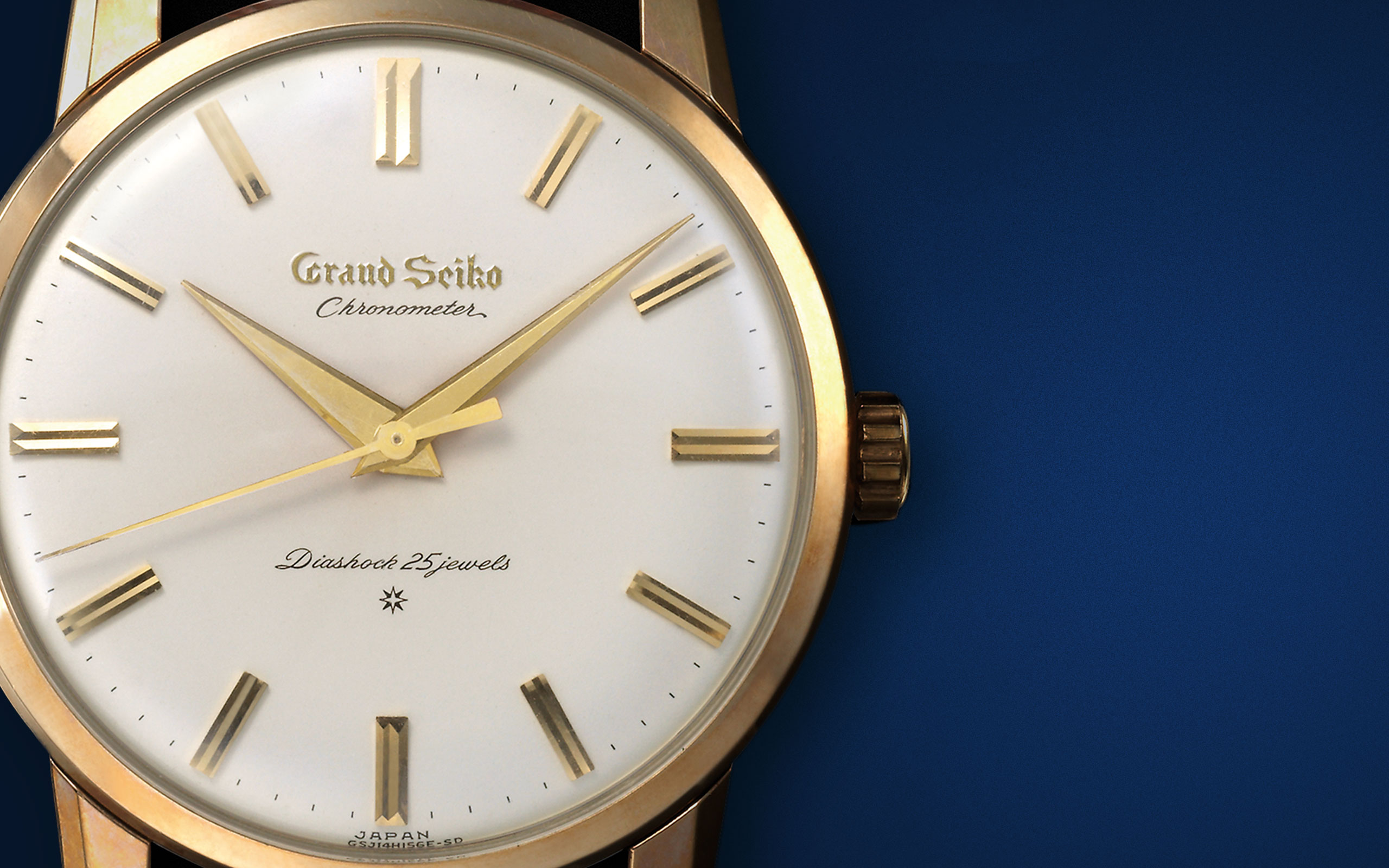
Taking everything they learned throughout the ‘50s, the team driving the Grand Seiko project focused on creating a timepiece that would be low maintenance, easy-to-wear, highly legible, and incredibly beautiful.
Launched in 1960, the first Grand Seiko was a major technical leap forward. The new Calibre 3180 built on the foundation of the 560 introduced in the Crown just a year earlier. It featured the latest Diashock system, hacking seconds, a fine-adjustment regulator, and a barrel hole jewel. The movement was rated to an impressive +12 to -3 seconds a day and offered a power reserve of 45 hours. It was also the first watch made in Japan to be compliant with the Bureaux Officiels de Contrôle de la Marche des Montres in Geneva, which was at the time the most respected chronometer testing body.
Design wise, the first Grand Seiko set some important standards, many of which have been carried through to this day. At 12 o’clock is the Grand Seiko logo rendered in a dramatic Gothic font, chosen for its traditional look demonstrating Grand Seiko’s reverence for the long history of mechanical watchmaking. Adorning the dial are diamond-cut markers and broad hands, which today are considered to be defining features of Grand Seiko timepieces and achieve the goal of high legibility and timeless beauty. Around back, the closed case back features the Grand Seiko lion, the brand’s enduring symbol and a reflection of the ambition of the Grand Seiko team to make the “king of watches” with precision, durability, and beauty at the forefront.

The resounding success of the first Grand Seiko encouraged the design team to pursue the next step in creating the “ideal” watch. Once again, practicality was the team’s North Star, and so four years later in 1964 the Self-Dater was born. Equipped with Calibre 5722A with a quick-set date, the Self-Dater allowed the wearer to adjust the date without having to advance the hands. Additionally, a new case design rendered in stainless steel offered greater water resistance with a rating of 50 meters, making the Self-Dater even more practical for daily wear than its predecessor. The now-iconic markers and hands remained, but were made even larger to boost legibility further.
But that’s not all that made the Self-Dater such a special watch and deserving of a dedicated spot in Grand Seiko’s storied history. The Self-Dater, on top of everything else, was also the first Grand Seiko timepiece to feature “Zaratsu” polishing.
“Zaratsu” derives its moniker from the name of the manufacturer that produced the original machines on which the Self-Dater was polished. Zaratsu is a method of polishing metal parts of a watch by pressing them against an emery cloth or paper abrasive on the side of a rotating metal disk. It’s a painstaking, laborious process, and it’s a skill that takes years to hone, but the results are well worth it. Grand Seiko craftspeople are able to create distortion-free flat surfaces and super sharp edges where plane meets plane. This is what gives Grand Seiko watches their unique high-end look, and to this day all Grand Seiko cases are Zaratsu polished.

Marking an important leap from manual winding to automatic, the 62GS was Grand Seiko’s first automatic timepiece. There were two variants: the date version powered by Calibre 6245A, and the day-and-date version with Calibre 6246A. Boasting a higher-torque mainspring and an oscillating weight, the 62GS was thicker than past Grand Seiko timepieces, but the design team saw to mitigate the thickness of the movement through a clever case design. The box-shaped crystal was fixed directly to the mid-case, eschewing the need for a bezel that would otherwise add visual height to the profile of the case. Furthermore, the case sides slanted down to create a slimmer profile, and the top surface of the case narrowed so that it could connect to the lugs with as little mass as possible while retaining the distinct faceted design.
Today, the modern interpretation of the 62GS design, prominently featured in the current US-exclusive Japan Seasons collection, keeps many of the same design elements that made the original such a unique and prized timepiece.
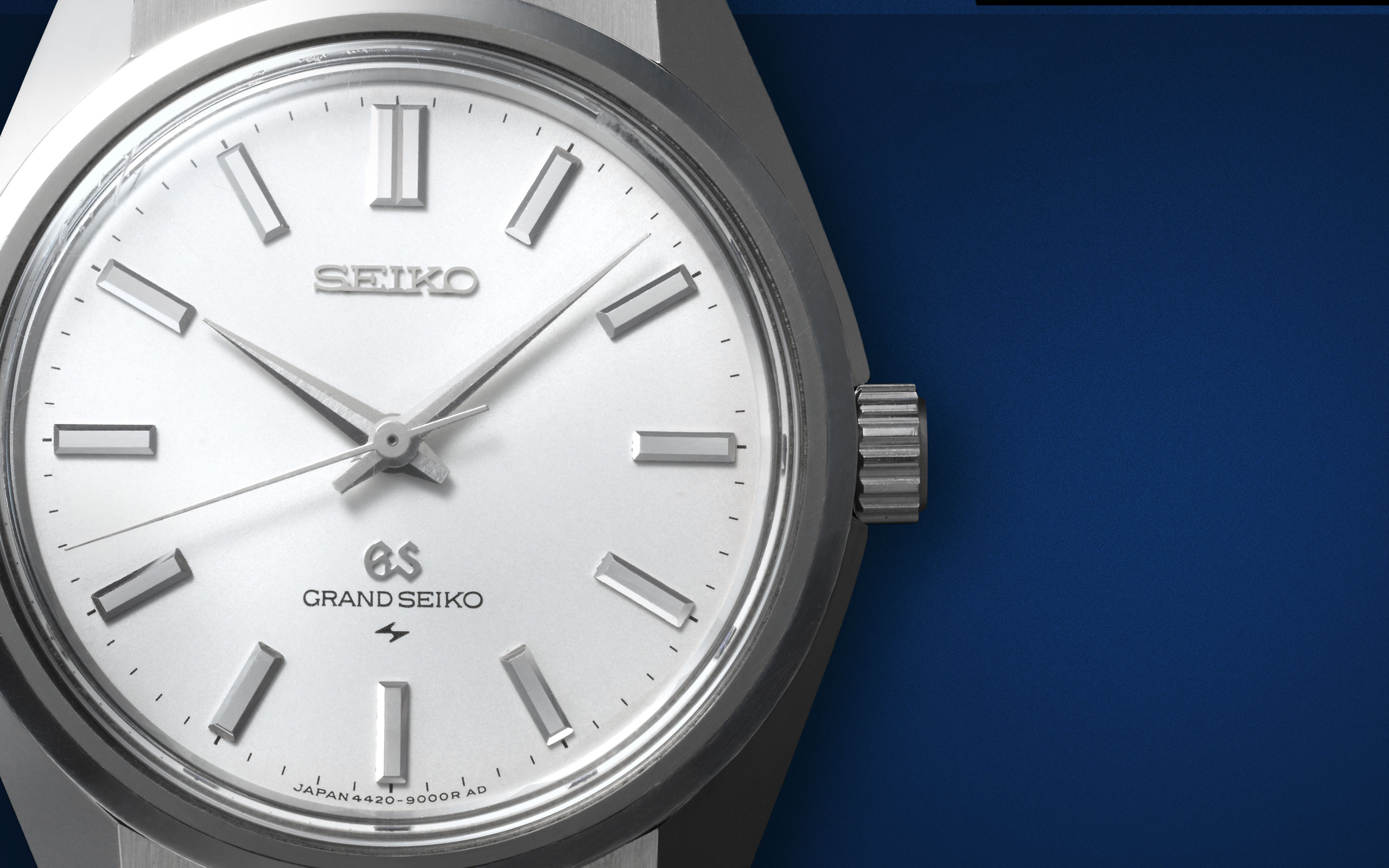
Suwa Seikosha was responsible for the creation of all Grand Seiko watches until 1967, when Daini Seikosha produced their first Grand Seiko model. Possibly unknown to them at the time, this watch would forever have an impact on Grand Seiko.
Despite achieving chronometric excellence, the focus having been primarily on the precision of the movements, the company had not established any real identity for its watches in terms of exterior design. The company’s chief designer spent many hours at the Wako store in Ginza observing clients shopping for watches, keeping an eye on how they reacted to the wide array of brands and styles available to them. His conclusion was that if Grand Seiko wanted to stand out, the watches would require more brilliance, or, as he put it, they should “sparkle with quality.”
For the Japanese, black and white are not often expressed in their extremes; instead, gradations between light and shadow, and the harmony between the two, is valued highly. To infuse Grand Seiko timepieces with this distinctly Japanese sense of beauty and expression of light and shadow, Grand Seiko’s designer focused on bringing together straight lines and flat surfaces in a structural way.
To that end, the Grand Seiko Style has three guiding principles.
Every watch design necessarily involves the use of both flat and curved surfaces, but for Grand Seiko, flat surfaces are preferred. This is to allow for greater reflection of light and the extensive use of these planes contributes to the sparkle of quality that defines Grand Seiko.
To maximise the reflections, the flat surfaces should be as wide as possible on every part of the case as well as on the dial and hands.
Wherever possible, every surface and facet should be in a mirror finish and polished so that there is no distortion in any reflection.
Based on these three principles, nine design elements were identified as being critical in guiding every detail of a Grand Seiko watch.

In 1967, Grand Seiko introduced a watch that would come to forever influence Grand Seiko’s Style – the 44GS. The shape of the case was ground-breaking. The flat front surfaces were Zaratsu polished to a distortion-free shine, and the case sides slanted sharply inwards, allowing for a highly ergonomic fit on the wrist. A deep-set crown at 3 o’clock was meant to preserve the beauty of the case lines. The dial markers and hands were highly faceted to allow light to play across the dial, which was extended further via a dramatic mirror-polished bezel. The resulting watch was immediately eye-catching, truly exuding the “sparkle of quality.”
The Grand Seiko Style was developed seven years after the first Grand Seiko timepiece made its way into the world, and it continues to be an important guide for the company. Nevertheless, the rules established over half a century ago were never intended to be rigid, and over the years they have been subtly adapted. In this way it is important to understand that the Grand Seiko Style is both preserved and enhanced as time moves forward.
A reinterpretation of the 44GS design has become a core pillar of Grand Seiko’s catalogue today, and unsurprisingly so. By retaining much of its core design DNA, the modern interpretation 44GS and its success shows that the watch best embodies the Grand Seiko Style is truly timeless.
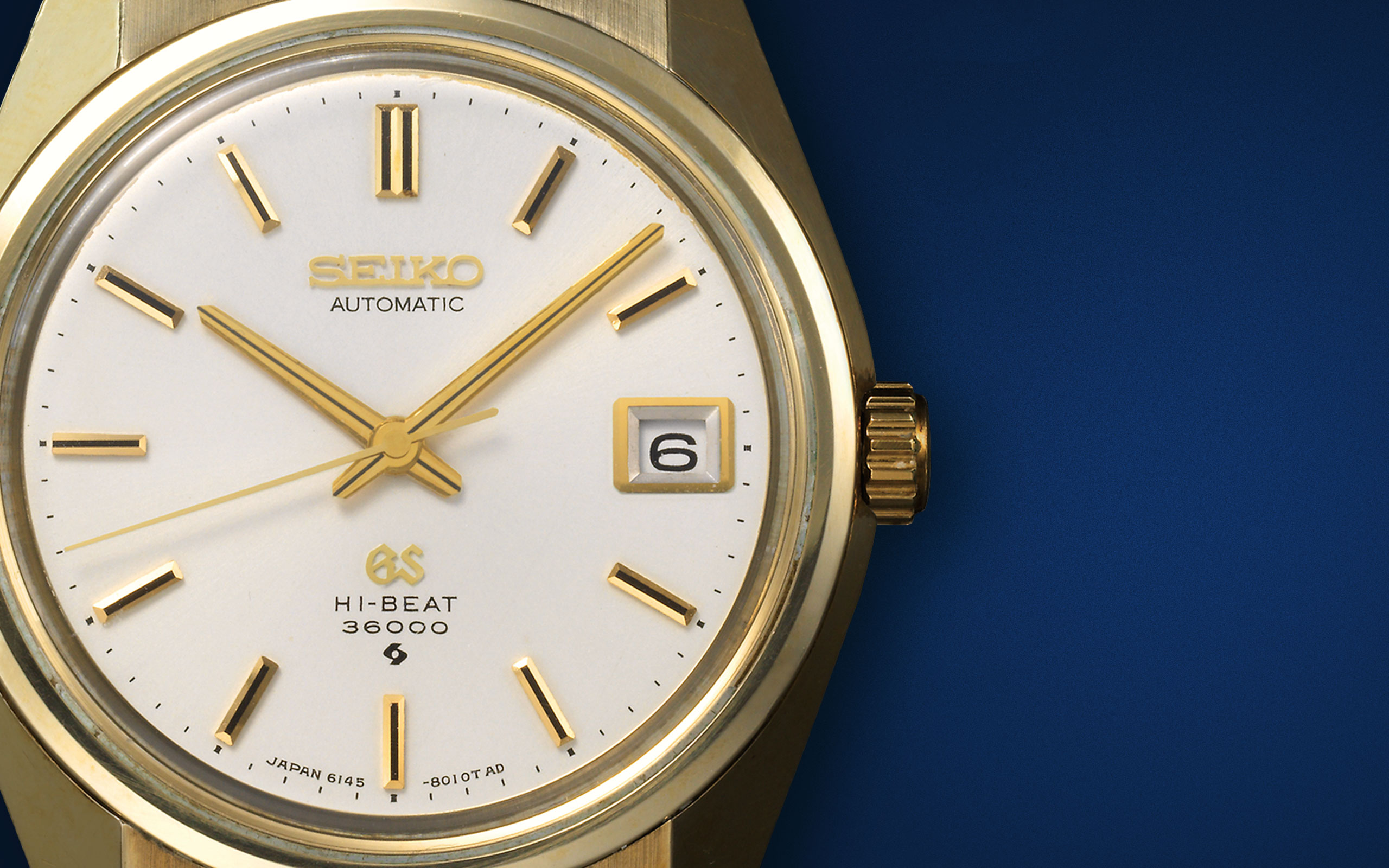
The 61GS, created by Suwa Seikosha in 1968, was Japan’s first watch with an automatic 10-beat movement, Calibre 6145. The 61GS was designed with a focus on everyday practicality. To improve the efficiency of the oscillating weight, Grand Seiko implemented a proprietary winding mechanism called the “Magic Lever,” which effectively wound the mainspring in both directions. This design of the “Magic Lever” pawl winding system was developed by Seiko originally in 1959. Other advancements were implemented as well to improve efficiency and stabilise performance. The 61GS became renowned as one of the finest watches produced by Grand Seiko. The 61GS was even chosen for inclusion in the Time Capsule Expo of 1970 held in Osaka, and it was buried at the site of the former Osaka Castle in 1971. It is due to be opened in the year 6970 at the Osaka Expo, exactly 5,000 years later.
In November 1969, Grand Seiko announced the 61GS V.F.A. Realised once again by Suwa, this important timepiece featured an automatic 10-beat movement with a ground-breaking accuracy standard. The first V.F.A. movements, the calibre 6185, were rated at an incredible ±1 minute a month. This new benchmark was named the “Grand Seiko V.F.A. Standard,” with the acronym standing for Very Fine Adjusted. This higher standard required more rigorous testing than that of the Grand Seiko Standard which was already exceeding Chronometer certification. Accuracy tests were conducted in 6 positions, not just 5, and they were conducted over a period of 15 days to meet the strict criteria of ±2 seconds per day.
Three years later in 1972, Suwa took another step forward with a new variant of the 61GS V.F.A., this time updated with a day-date complication. These models were some of the first to actually have V.F.A. on the dial.
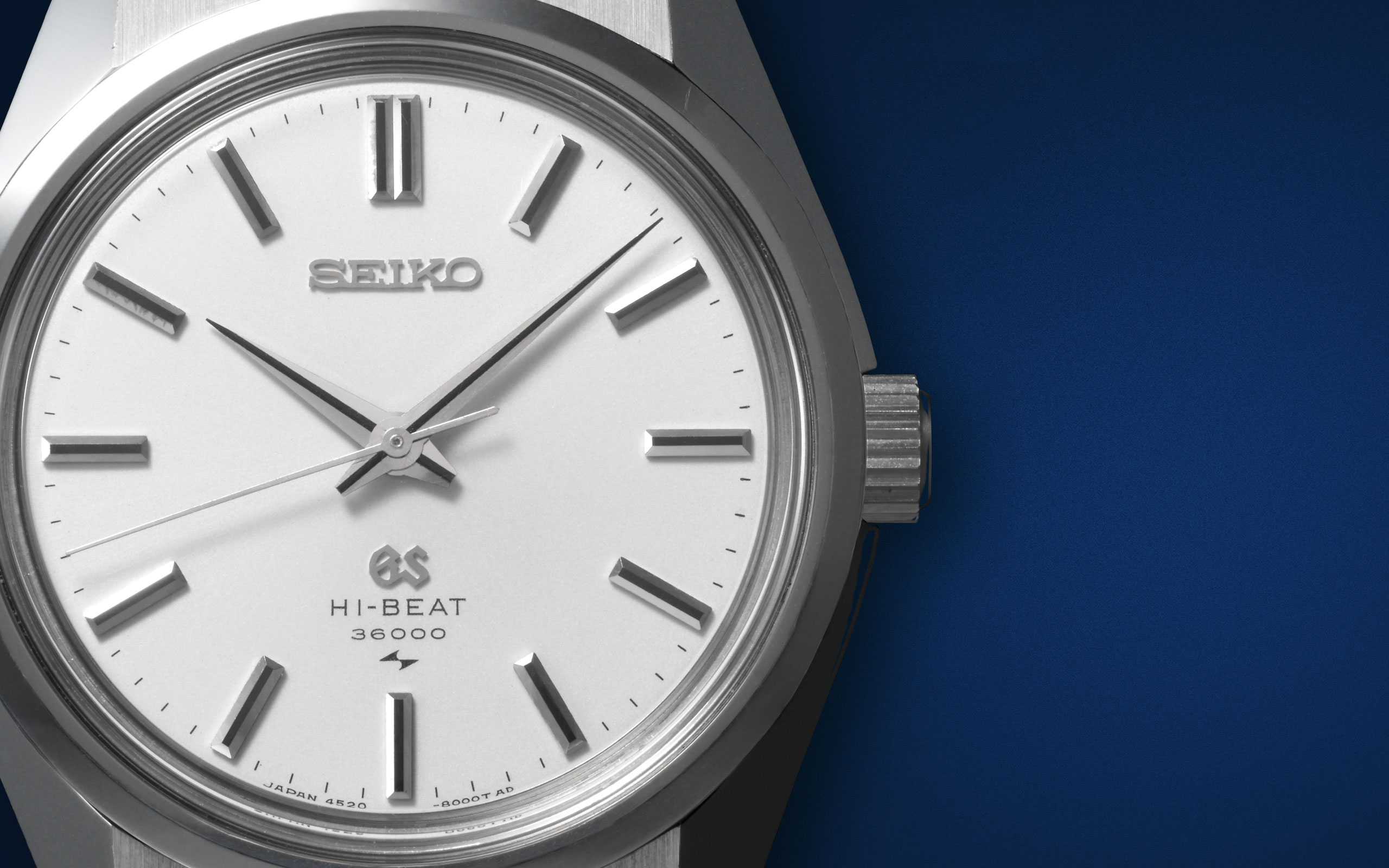
Not long after the release of the 61GS in 1968, Daini Seikosha unveiled the 45GS, also powered by a 10-beat movement, this time a thin one (3.5mm) with a manual winding mechanism. There were two movement variants: Calibre 4522 had a calendar display with an instantaneous date change feature, and Calibre 4520 was time only. Many of the 45GS share much of the same design language as the 61GS, and offer the same high level of precision regardless of position or external disturbances. The month that Suwa unveiled the 61GS V.F.A., Daini presented the 45GS V.F.A., which featured an updated version of their manual 10-beat movement, also rated to ±1 minute per month.
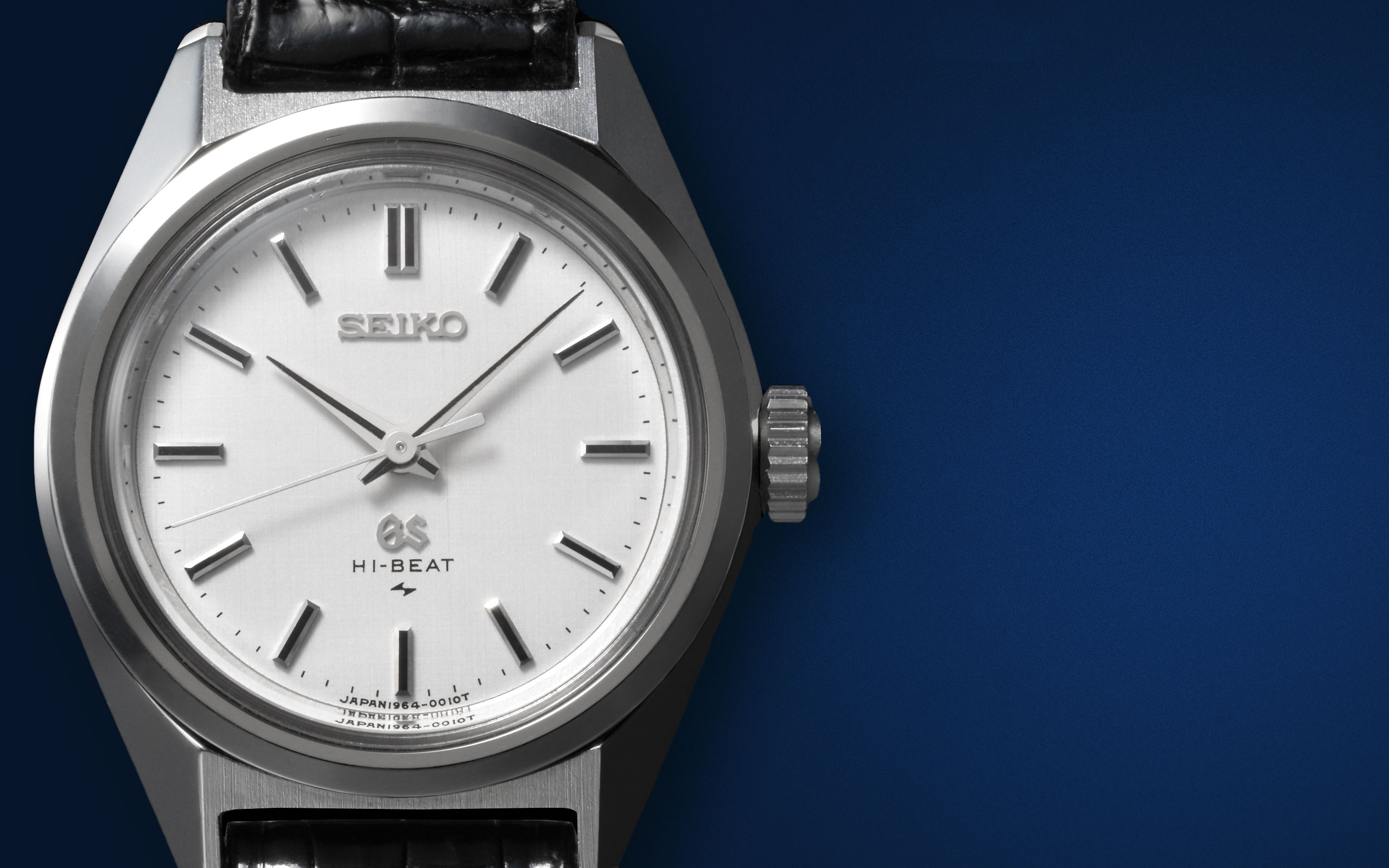
1968 also saw the first Grand Seiko watch for women. Though notably smaller, the 19GS offered high precision thanks to its own 10-beat movement. Generally, smaller movements, because of their smaller balances, have a harder time meeting strict precision tolerances, but the 19GS met Grand Seiko’s 15-day precision standard. Furthermore, the 19GS expressed the Grand Seiko Style despite its smaller size, boasting multi-faceted hands and markers, a flat dial, and distortion-free Zaratsu polishing throughout. In 1972, Grand Seiko released the 19GS V.F.A., the first high-precision women’s mechanical watch rated to ±2 minutes a month. Just as they did with the first 19GS, the Grand Seiko team overcame the inherent challenge of achieving high accuracy from a small form factor, a major technical accomplishment.
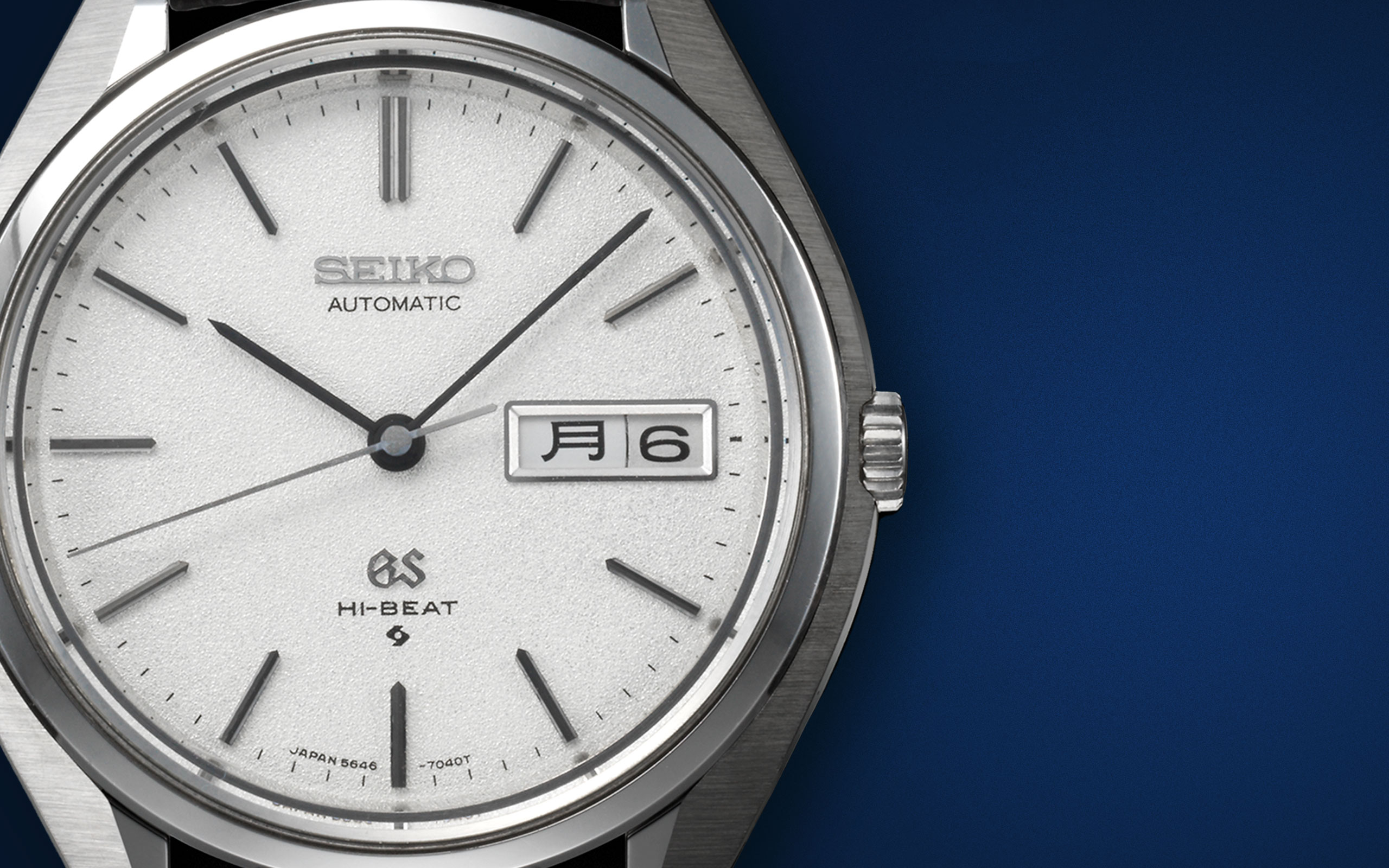
After their focus on accuracy, the Grand Seiko team at Suwa Seikosha turned to reducing the size of their watches. The 56GS, released in 1970, presented a smaller form factor via an automatic calibre measuring just 4.5mm in height. Despite the smaller size, the watch retained the high precision of its predecessors.
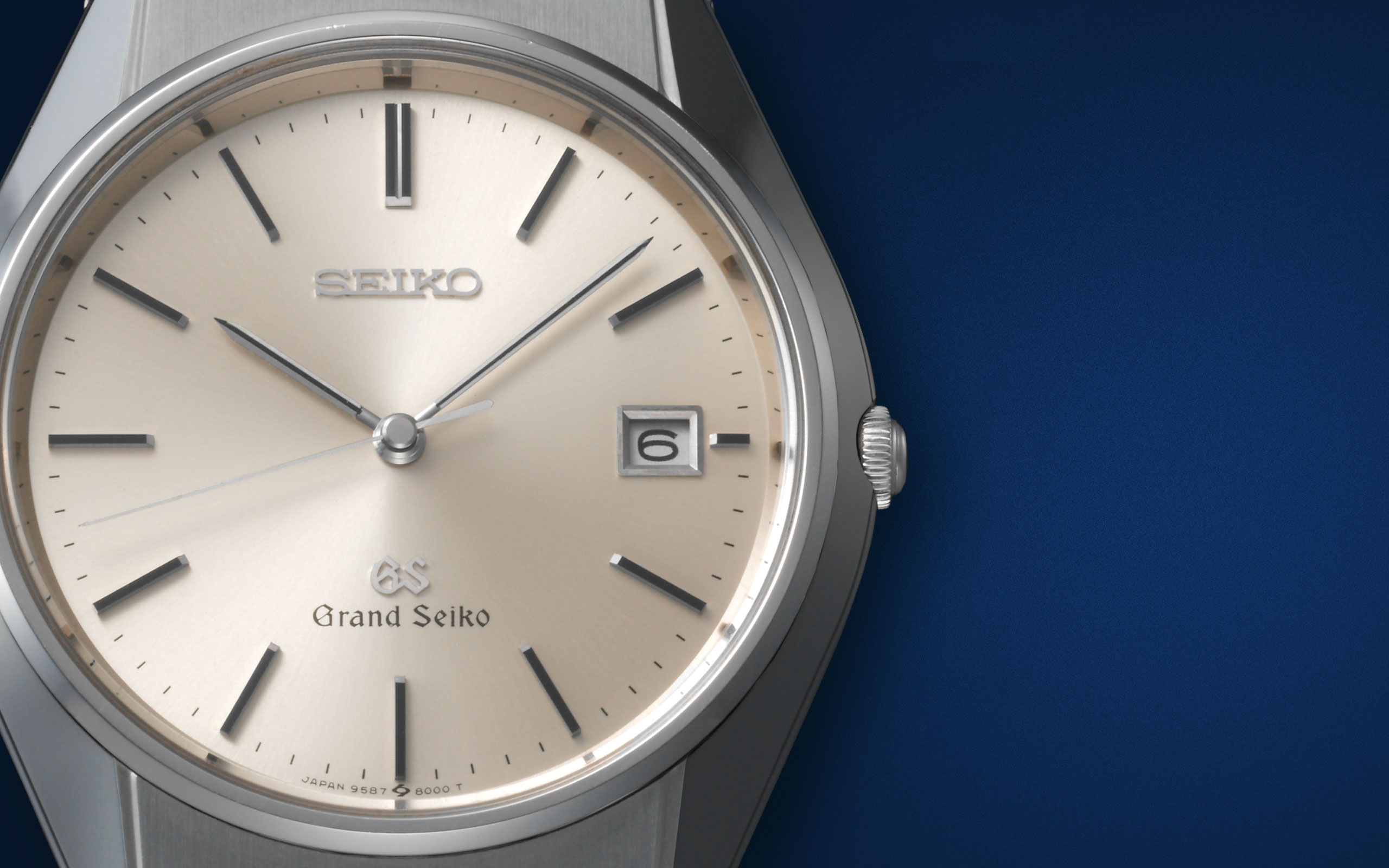
In 1988, Grand Seiko brought their horological mastery to quartz, unveiling the 95GS, Grand Seiko’s very first quartz timepiece. Like its mechanical counterparts, the 95GS was no ordinary watch; in fact, it was far superior in its build quality and precision than most quartz timepieces on the market at the time. Boasting an accuracy that was 10 times greater than that of ordinary quartz watches, the 95GS featured specially selected quartz crystals that were superior in temperature and humidity resistance, and new IC-based features that included compensation for changes in oscillator frequency and a tempo regulator that controls oscillation and pulsing speeds. The 95GS was rated to an unprecedented ±10 seconds a year.
Unfortunately, missing from the 95GS were some of Grand Seiko’s iconic features, namely the large, broad hands the brand had come to be known for.
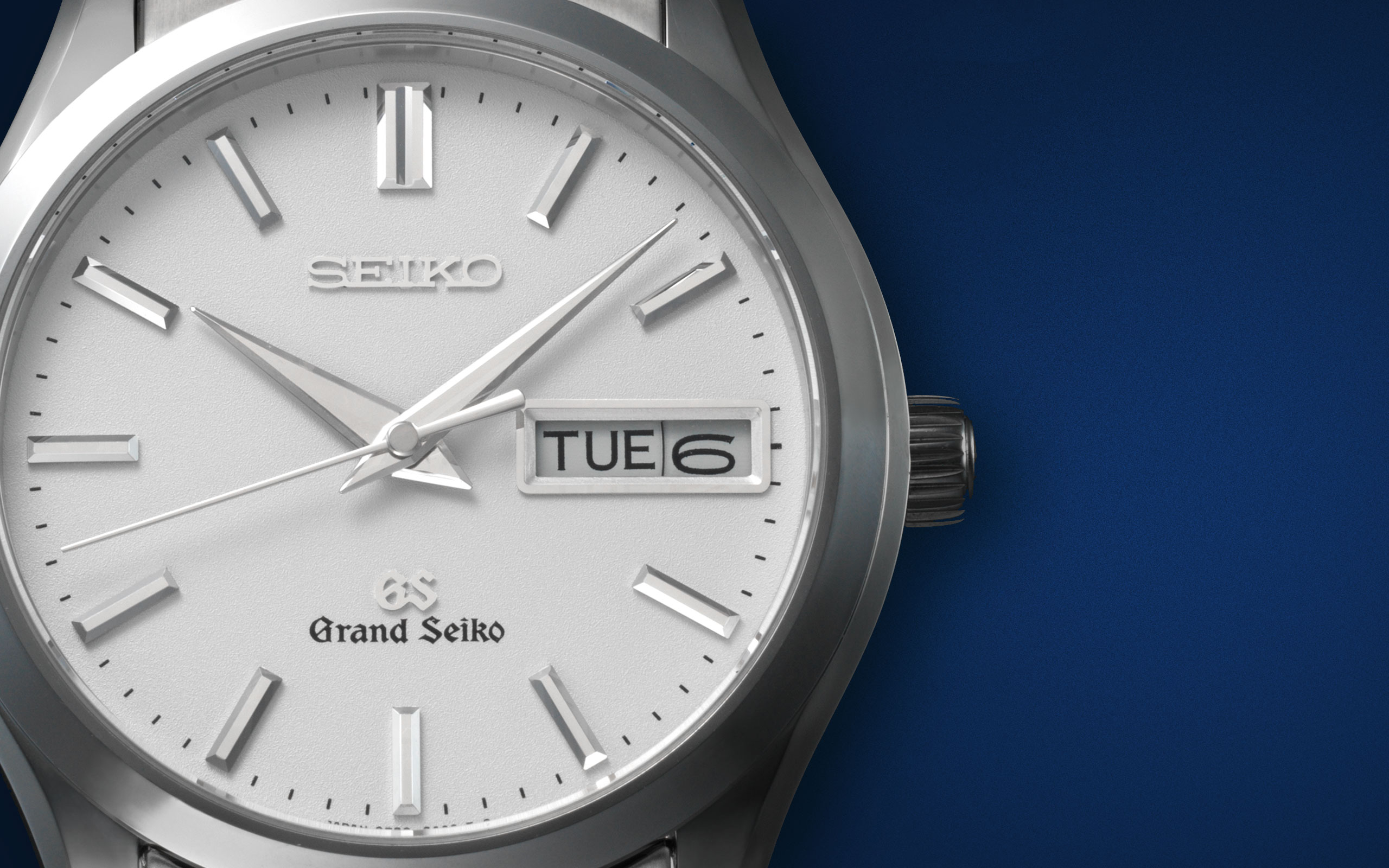
Enter Calibre 9F. Introduced in 1993, Grand Seiko’s 9F movement combined an accuracy rating of ±10 seconds a year with the high torque of a mechanical movement and a low level of energy consumption. It debuted a number of innovative features that were new for a quartz watch. The Twin Pulse Control Motor allowed for the use of Grand Seiko’s long, heavy hands; a backlash Auto-Adjust Mechanism eliminated any shuddering of the seconds hand as it advanced across the dial, ensuring accuracy; an aged and highly-stabled quartz crystal paired with an IC programmed to specifically respond to that crystal’s reaction to temperature changes; and an Instant Date Change Mechanism.
The 9F series continues to power Grand Seiko’s quartz line. In 2018, the brand introduced a GMT complication with an independent hour hand via Calibre 9F86. And 2020 saw the introduction of Calibre 9F85, which allows for an independently adjustable hour hand without the addition of a GMT complication.

1998 was a monumental year for Grand Seiko. It saw the release of two high-precision movements, Calibre 9S55 and 9S51, launching a movement family that to this day remains the beating heart of traditionally mechanical Grand Seiko watches. With the advent of Calibre 9S came a new Grand Seiko Standard, going further than the chronometer standard and the original Standard set in 1966. With this new specification, the average daily discrepancy was set to +5 to -3 seconds a day with a maximum allowed average variation in daily error up to 1.8 seconds, beating the chronometer rating of +6 to -4 seconds and the average variation in daily error of 2 seconds. Additionally, the current Grand Seiko Standard tests 6 positions versus the Chronometer standard’s 5, and all testing is done for 17 days versus 15 days. Today, Grand Seiko movements are tested under three different temperatures, with a secondary test performed on temperature. Any movement that experiences deviations beyond the stipulated ranges cannot be used in a Grand Seiko watch.
With a new era of movements, the design team at Grand Seiko was tasked with creating watches that could house these engines. The brief was to provide an eternal aesthetic appeal, a prompt not too dissimilar from the one that resulted in the Grand Seiko Style of the late ‘60s.
Lead designer Nobuhiro Kosugi set to work, pulling inspiration from the past without being entirely tethered to it. The first watch in this modern era of Grand Seiko, reference SBGR001, embodied this new design philosophy. It featured accented edges between flat and angled faces, razor-edged hour and minute hands and markers, a bracelet in place of a leather strap (and lug holes to easily swap it out), and a new font for the date numerals disc to maximize legibility. Today, this design remains emblematic of the watches in our ever-popular Heritage Collection.
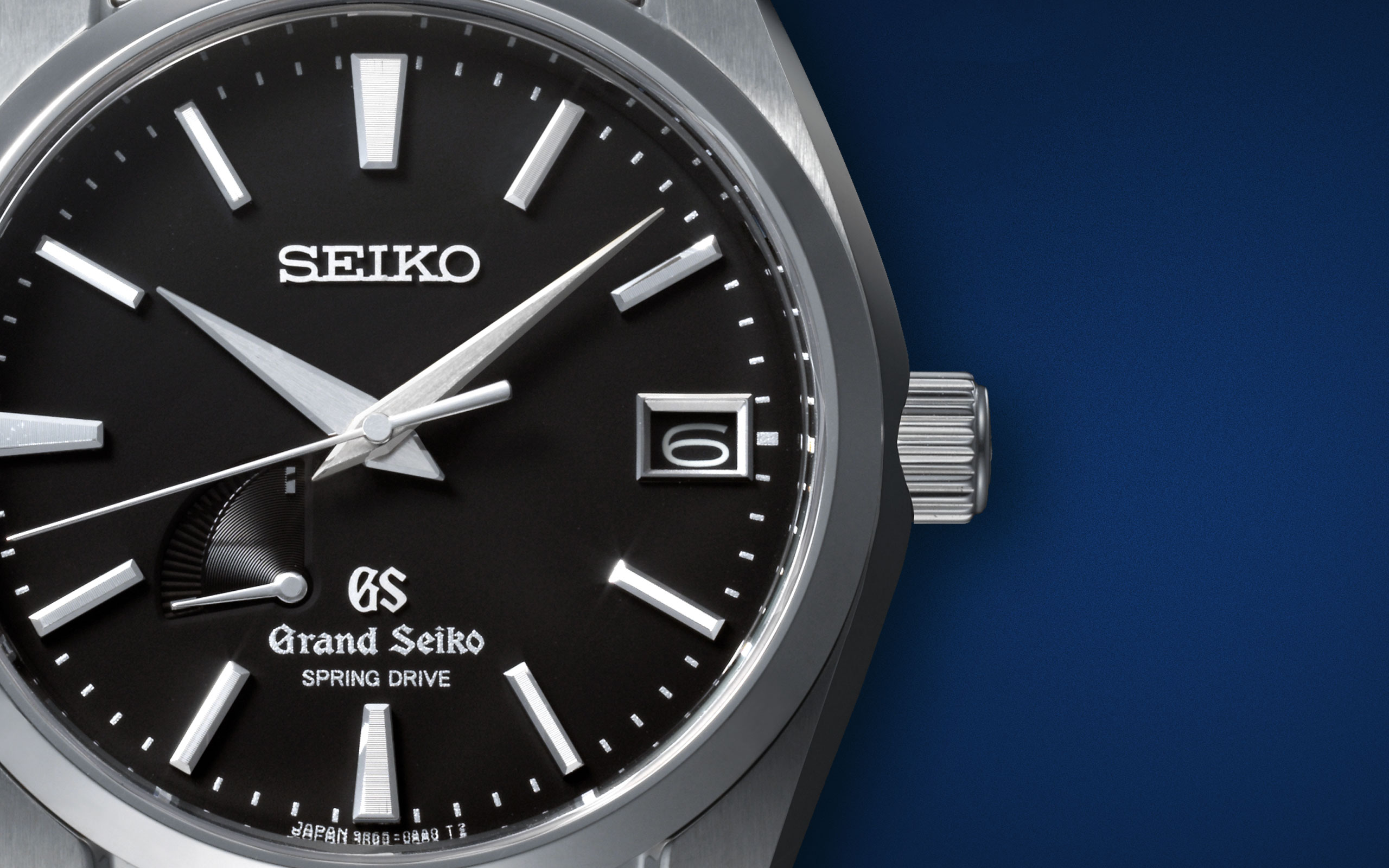
The long history of Spring Drive can be traced back to the ‘70s and Yoshikazu Akahane, a young, ambitious engineer at Suwa. He had an ambitious goal to create a movement that could deliver the precision of quartz without being dependent on a power source other than the wearer. Essentially, the goal was to make something that could combine the high torque and never ending power source of mechanical watch, with the high precision and stability of quartz. More than two decades later, this was realised in Spring Drive, a new type of watch in which an electro-magnetic regulator controls a mechanical movement.
Though the first Spring Drive watch was released in 1999, it wasn’t until 2004 that a Spring Drive-powered Grand Seiko made its debut, with reference SBGA001 running on Calibre 9R65 released earlier that year. Today, the 9R series remains the driving force of Grand Seiko’s Spring Drive lineup.
Another iconic Grand Seiko timepiece made its way into the world around this time. In 2005, we saw the release of reference SBGA011 (currently SBGA211), otherwise known as the “Snowflake.” With its eye-catching dial patterned after the windswept snow around Shinshu, the Snowflake is undoubtedly one of Grand Seiko’s most renowned watches in the current collection.
